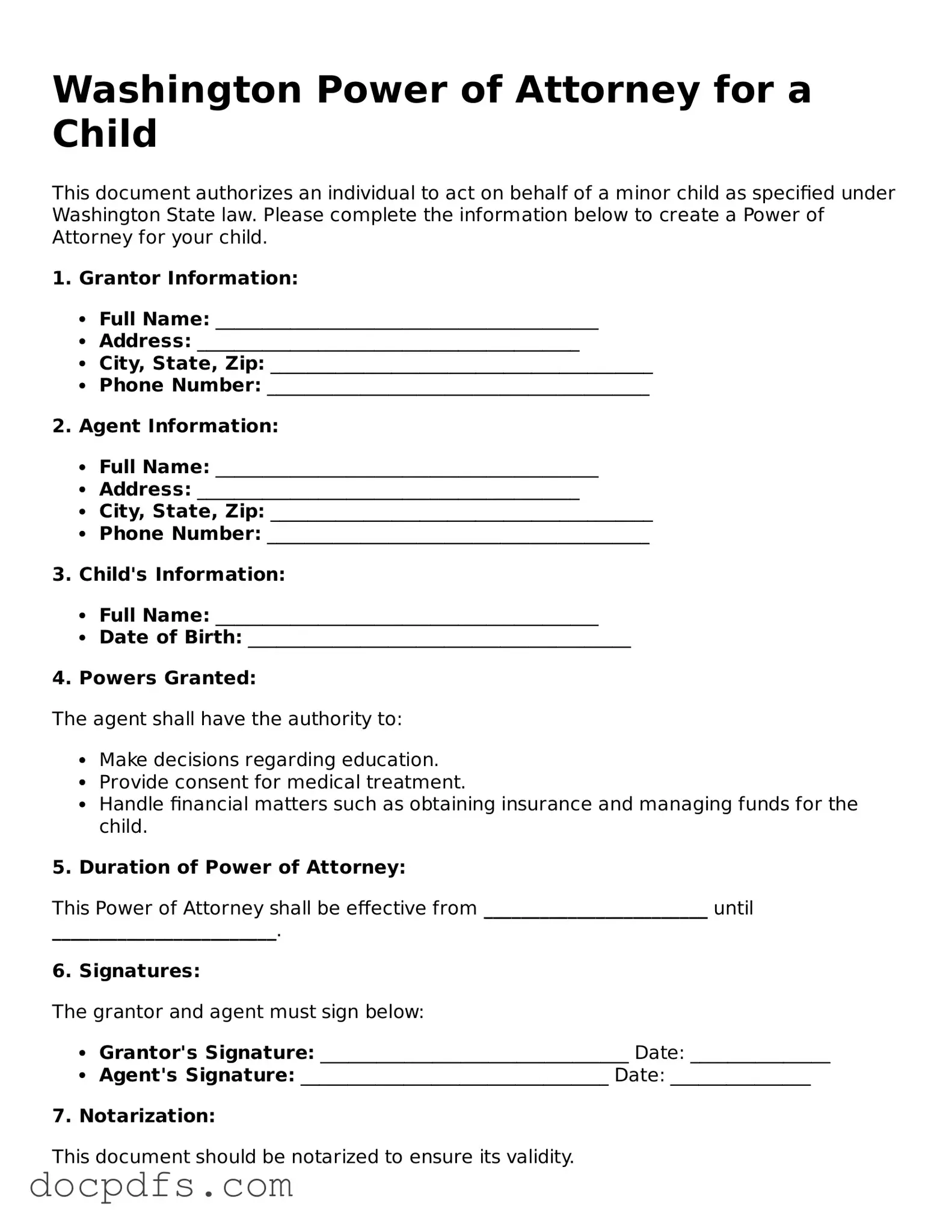What is a Washington Power of Attorney for a Child?
The Washington Power of Attorney for a Child is a legal document that allows a parent or guardian to grant another individual the authority to make decisions on behalf of their child. This can include decisions related to health care, education, and general welfare. It is particularly useful when parents are unable to care for their child temporarily, such as during travel or illness.
Who can be appointed as an attorney-in-fact?
Any responsible adult can be appointed as an attorney-in-fact. This could be a relative, family friend, or any trusted individual who is willing to take on the responsibility of caring for the child. It is essential to choose someone who understands the child's needs and can act in their best interest.
How long is the Power of Attorney valid?
The Power of Attorney for a Child is typically valid until the specified end date outlined in the document or until the parent or guardian revokes it. If no end date is mentioned, it remains effective until the parent or guardian decides to terminate it. It is advisable to keep track of the duration and any changes that may arise.
What decisions can the attorney-in-fact make?
The attorney-in-fact can make various decisions regarding the child's welfare, including:
-
Health care decisions, such as medical treatment and emergency care.
-
Educational decisions, including enrollment in school and participation in extracurricular activities.
-
General welfare decisions, like daily care and living arrangements.
However, the attorney-in-fact cannot make decisions that are outside the scope defined in the Power of Attorney document.
Is the Power of Attorney for a Child reversible?
Yes, the Power of Attorney can be revoked at any time by the parent or guardian. To revoke it, a written notice should be provided to the attorney-in-fact and any relevant institutions, such as schools or medical facilities. This ensures that all parties are aware that the attorney-in-fact no longer has authority over the child.
Do I need to have the Power of Attorney notarized?
In Washington, it is recommended to have the Power of Attorney for a Child notarized to enhance its validity. While notarization is not always legally required, it can help avoid disputes and ensure that the document is recognized by third parties, such as schools or medical providers.
Can I use a Power of Attorney for a Child if I am not the biological parent?
Yes, non-biological parents or guardians can use a Power of Attorney for a Child, provided they have the legal authority to do so. This includes stepparents, grandparents, or legal guardians. It is important to ensure that the document is properly executed and that the individual has the right to make decisions on behalf of the child.
What happens if the Power of Attorney is not in place?
If a Power of Attorney for a Child is not established and the parent or guardian is unavailable, it may create challenges in making decisions for the child's care. In such cases, authorities may need to involve child protective services or the court system to determine the child's best interests, which can be time-consuming and complicated.
Power of Attorney for a Child forms can be obtained from various sources, including:
-
Legal websites that provide templates and information.
-
Local family law offices or legal aid organizations.
-
State government websites that offer resources for parents and guardians.
It is advisable to ensure that the form complies with Washington state laws and meets specific needs before use.
